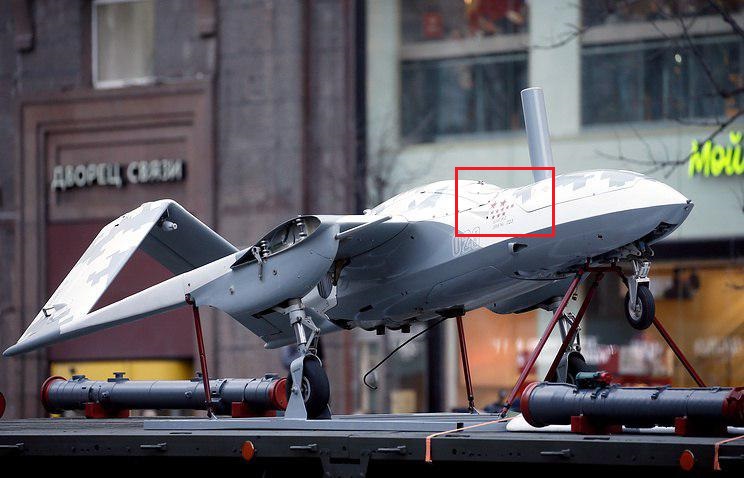On December 18th, during the End-Of-Year Session Of the Russian Defense Ministry’s Board, Defense Minister Sergei Shoigu said that middle-range attack and surveillance drones would be commissioned into the Russian army in 2019.
“Work is nearing completion to create medium-range reconnaissance and attack drones. From next year, they are expected to start arriving for the troops,” the defense chief said.
Under the State Defense Order, the troops receive over 300 short-range unmanned aerial vehicles (UAVs). Currently, the Russian army has more than 2,100 such units.
Sergei Shoigu did not specify which drones exactly would be commissioned, but it is possible that it is one of several types that are under development.
- In September, Russia’s Kronshtadt Group unveiled a strike-capable variant of the Orion-E medium-altitude long-endurance unmanned aerial vehicle (MALE UAV). The weaponized Orion-E was showcased with a new 50 kg guided missile developed by the company. The Orion-E has a maximum take-off weight (MTOW) of 1,000 kg and can carry a payload of 200 kg. It has a maximum flight altitude of 7,500 m, a range of 250 km, and an endurance of 24 hours. It also has electro-optical/infrared (EO/IR) turret features two thermal imagers, wide-angle TV camera, as well as a laser rangefinder/target designator.
- Kronshtadt Group is also developing a high-altitude long-endurance (HALE) UAV called Orion-2. The air vehicle is understood to have a MTOW of 5,000 kg, a maximum flight altitude of 12,000 m, and a speed of 350 km/h.
- The Altair (Altius-M / Altius-O) was supposed to be an aircraft weighing three-tons with a wingspan of 28.5 meters can carry a load of up to two tons, cover a distance of 10 thousand kilometers, rise to an altitude of 12 kilometers and be in autonomous flight for up to two days. However, the project was abandoned in October 2018, following a shortage of “modern microprocessors, sensors, software products that meet the modern requirements has all recently put an end to the promising project of a heavy attack and reconnaissance drone.” It may, however, have been finished and almost ready to be commissioned.
- Sukhoi’s Okhotnik-B is a heavy attack drone, which entered its final stage of ground tests on June 28th, 2018. The mass of the UAV is in the range of 10-20 tons. Based on the data on the take-off weight, it can be assumed that this drone will be close in its characteristics to the American drone X-47B development Northrop Grumman. It can fly at high subsonic speeds, operating within a radius of 4,000 kilometers, carrying a diverse target load, including a shock, with a mass of up to two tons.
- The company Micron developed the Karnivora small strike/interceptor drone. The UAV is capable of carrying out out reconnaissance, strikes on ground targets and intercept other unmanned aerial vehicles. As of December 14th, the drone is in flight tests, but the drone is allegedly so promising that it is almost certain that it will enter mass production. It can supposedly fly continuously for up to 15 hours.
- During the Victory Day Parade on May 9th, 2018, the Korsar Attack Drone was unveiled. The Korsar was designed as a 200kg combat UAV with a six and a half meter wingspan, and its airframe makes extensive use of composite materials to reduce its weight and increase its durability. The platform will be able perform kinetic strikes, deploying both guided and unguided munitions, as well as highly altitude reconnaissance similar to the U.S. RQ-170. It will make use of existing air to ground munitions deployed by Russia’s existing strike platforms, which have been modified to be deployed by the Korsar. The drone is also designed to perform an electronic warfare role, and will have a combat radius of 200km – a relatively short range.
- During the parade, the Katran unmanned helicopter was also unveiled. It is intended for the he support of special forces, as well as reconnaissance and battlefield surveillance using TV cameras and thermal imagers. Its fuselage is 6 meters (approximately 20 feet) long and one meter (3.3 feet) wide. The UCAV has a gross weight of 490 kg (992 pounds); lifts a 120-kg (265-pound) payload; gains top speed of 130 km/h (70 kt); and an altitude of 2,000 meters (6,600 ft). It can also carry out strikes with guided and unguided munitions.
It is yet unclear, which of these, if any, the Russian troops will receive in 2019.
MORE ON THE TOPIC:







Russian UAV capabilities peaking and closing the gap with the US UAV’s.
The Altair and Sukhoi Okhotnick heavy long range attack drones look rather capable and impressive.
Russia’s biggest problem is the slow mass production of advanced CPU’s and optics,its actually the main reason why the T72B3 uses the lisance built copy of the Catherine -FC thermal.
I’m shocked as well they stopped the T-14 armata purchase, allegedly the price was too high, but the unit only costed 3.7M$ hence my confussion
thats not true they never stoped them and ever will they have already ordered anoth batch of T14’s this year on top of the 100 order form 2016.
They manufacture them slowly.